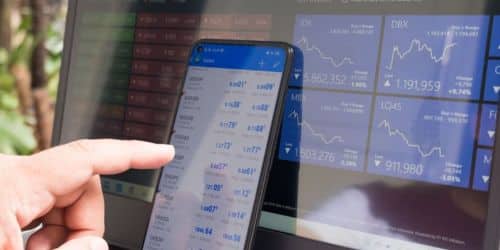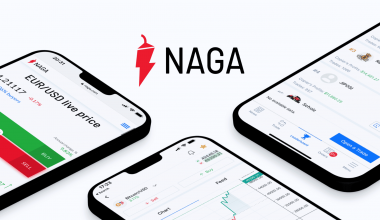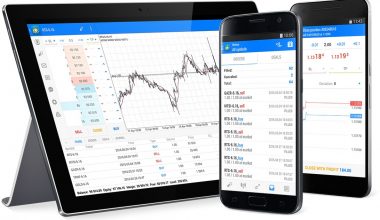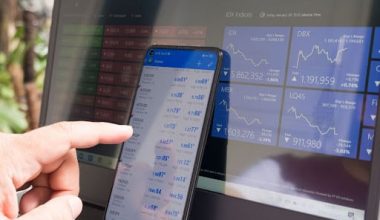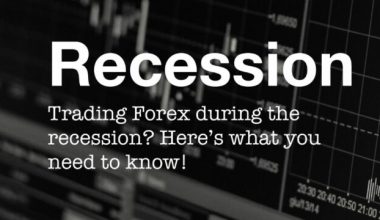Mastering the market may seem daunting, but you can maximize your forex trading potential by meticulously monitoring each trading session and selecting suitable currency pairs. With various sessions in a 24-hour cycle and diverse currency pair volatilities, it’s crucial to comprehend the characteristics of each trading period to enhance your profitability.
In this article, you’ll delve into the details of different Forex trading sessions and discover the best Forex pairs to trade during each session. We will examine strategies for optimizing your trades during the Asian, European, and North American sessions while exploring the opportunities and risks associated with cross-currency pairs.
By understanding the dynamics of each session and identifying the most suitable currency pairs, you can enhance your trading effectiveness and capitalize on favorable market conditions.
By balancing risk and reward while adapting your strategy for distinct sessions, you’ll be well-equipped to navigate the ever-changing world of forex confidently.
Understanding Forex Trading Sessions
Let’s dive into understanding forex trading sessions and how they can impact your success in the market! Forex operates 24 hours a day, trading across various time zones worldwide. There are four primary trading sessions: Sydney, Tokyo, London, and New York. Each session has its unique characteristics and levels of liquidity.
As a trader, you must familiarize yourself with Forex currency pairs in different sessions to maximize your trading potential. The Sydney session starts the trading day, followed by the Tokyo session about two hours later. These two Asian sessions often see lower volatility than their European and American counterparts; however, they can still provide ample opportunities for savvy traders who understand currency-specific dynamics during this time frame.
The London session begins after the close of the Asian markets and typically experiences high liquidity due to Europe’s financial centers’ concentration. This period often sees significant market moves as large institutional players enter or exit positions based on economic data releases or geopolitical events.
As we transition into the New York session, which overlaps with the London session for a few hours, you’ll notice increased volatility as North American traders join in on the market activity.
It is crucial to consider these overlapping periods when selecting currency pairs for each trading session since they tend to exhibit higher price movement than non-overlapping times.
Understanding how each forex trading session functions and capitalizing on its unique characteristics allows you to decide which currency pairs offer optimal opportunities during specific timeframes.
Now that we have an overview of forex trading sessions let’s discuss major currency pairs’ characteristics and volatility in more detail.
Major Currency Pairs: Characteristics and Volatility
In this section, you’ll delve into the characteristics and volatility of major currency pairs, remembering that knowledge is power when navigating the unpredictable waters of forex trading.
Major currency pairs are those that involve the most traded currencies in the world, such as the US dollar (USD), euro (EUR), Japanese yen (JPY), British pound (GBP), Australian dollar (AUD), Canadian dollar (CAD), and Swiss franc (CHF). Due to their widespread trading activity, these pairs typically exhibit high liquidity and low spreads.
Volatility for these currency pairs varies depending on global economic events, interest rate decisions by central banks, and market sentiment.
When examining these major currency pairs’ characteristics and volatility levels, it’s essential to understand how they react during different trading sessions.
For instance, EUR/USD tends to be more volatile during European and US trading sessions when both regions actively participate in forex markets. Conversely, AUD/JPY may demonstrate higher volatility during Asian trading hours due to heightened activity from traders based in Australia or Japan.
By identifying each pair’s unique behavior patterns within specific timeframes, you can better anticipate potential price movements and tailor your strategies accordingly.
Now that you have a solid understanding of major currency pair characteristics and their respective volatilities throughout different trading sessions, you can decide which pairs best suit your individual preferences and objectives.
As you continue your journey towards maximizing your forex trading potential, we will now explore how to effectively trade during the Asian session—a period marked by distinct opportunities that cater specifically to certain currency pair dynamics.
Trading During the Asian Session
It’s crucial to understand the nuances of trading during the Asian session, as this period offers unique opportunities and challenges that cater specifically to certain currency pair dynamics.
The Asian session, which typically runs from 11 p.m. to 8 a.m. GMT, is characterized by lower liquidity and volatility than the European and US sessions.
This is because major financial centers in Asia, such as Tokyo, Hong Kong, Singapore, and Sydney, account for a smaller share of global forex trading volume than their London and New York counterparts.
During the Asian session, you’ll want to focus on currency pairs involving the Japanese Yen (JPY), Australian Dollar (AUD), New Zealand Dollar (NZD), and other regional currencies like the Malaysian Ringgit (MYR) or Chinese Yuan Renminbi (CNY).
These pairs tend to experience higher volatility during this time frame due to local economic releases and market participants being more active.
Among these pairs, AUD/JPY, AUD/NZD, and NZD/JPY are some of the most popular choices among traders.
In addition to these regional pairs, it’s common for traders in the Asian session to trade major currency pairs like EUR/USD or GBP/USD, but with a keen eye on developments in Asia that could influence these markets.
While trading during the Asian session can offer unique profit opportunities if you’re well-prepared and focused on specific currency dynamics within this time zone, you must know the potential rewards and risks associated with lower liquidity levels.
As you develop your skills further into mastering forex trading across various sessions, including those associated with Europe, make sure you continue refining your understanding of how different factors influence each region’s characteristics so that you’re able to not just capitalize upon them effectively but also minimize any unforeseen setbacks along your journey towards becoming an expert trader.
Strategies for the European Session
Diving headfirst into the European session, you’ll find exciting opportunities and challenges, leaving your heart racing and your mind sharp. This is largely because Europe boasts the highest trading volume compared to other sessions, with London being the undisputed center for forex transactions.
As such, liquidity during this period is notably higher than in the Asian or North American sessions. Developing effective strategies tailored to these unique conditions is crucial to capitalize on this increased market activity fully.
One key strategy for making the most of the European session is to focus on major currency pairs that involve the euro (EUR), British pound (GBP), and Swiss franc (CHF). Due to European economic data releases, these currencies often exhibit greater volatility during this time.
Be sure to keep an eye on economic calendars and be prepared for potential market-moving events such as interest rate decisions by central banks or important speeches by financial leaders. Additionally, consider incorporating technical analysis tools like support and resistance levels, moving averages, and Fibonacci retracements into your trading strategy to identify entry points more accurately.
Another useful approach is to employ breakout strategies, which capitalize on sudden price movements following periods of consolidation within tight ranges. During the early hours of the European session, traders can observe how Asian markets have performed overnight and use this information to identify possible breakouts in certain currency pairs once European markets open.
With proper risk management techniques such as stop-loss orders or trailing stops in place, you can effectively play these breakouts while minimizing potential losses should things not go according to plan. Armed with these well-honed tactics, you’re primed to tackle what lies ahead: navigating the North American session with precision and expertise.
Navigating the North American Session
Ready to conquer the North American session, eh? Let’s dive into some strategies tailored just for you in this bustling market environment! As the financial centers of New York and Toronto come alive, the high trading volume during this session can provide substantial opportunities.
However, it’s essential to understand that navigating the North American session successfully requires a keen eye for detail, discipline, and a thorough understanding of market dynamics.
- Focus on major currency pairs: During the North American session, USD-paired currencies tend to experience increased volatility due to economic data releases and central bank announcements. Some popular pairs include EUR/USD, USD/CAD, GBP/USD, and USD/JPY.
- Monitor scheduled news events: Monitor the economic calendar as key data releases, such as employment figures or interest rate decisions, can significantly impact currency movements.
- Utilize technical analysis tools: With potentially strong trends emerging from European or Asian sessions carrying over into North American trading hours, technical analysis tools like moving averages or Fibonacci levels can help identify entry points or potential reversals.
- Make use of risk management techniques. Given the heightened volatility of certain currency pairs during this session, it’s crucial to implement stop-loss orders and maintain appropriate position sizing based on your risk tolerance.
As you hone your skills in navigating these strategies during the North American forex trading session, remember that understanding cross-currency pairs and minor pairs is vital for maximizing profit opportunities across various markets.
By delving deeper into these less common but valuable currency pairings next time, you’ll be better equipped to assess their unique risks and benefits while expanding your forex trading repertoire.
Cross-Currency Pairs and Minor Pairs: Opportunities and Risks
Did you know that cross-currency and minor pairs account for nearly 25% of the global forex market turnover? These lesser-known pairings offer unique opportunities and risks, so let’s explore them to enhance your trading strategies.
Cross-currency pairs don’t involve the US dollar, while minor pairs are less frequently traded combinations of major currencies. Examples include EUR/JPY, GBP/CHF, and AUD/NZD. Because they’re less popular than major currency pairs like EUR/USD or USD/JPY, cross-currency, and minor pairs can exhibit lower liquidity levels, wider spreads, and increased volatility.
To maximize your potential when trading these types of currency pairs, it’s essential to understand their unique characteristics. Cross-currency pairs usually strongly correlate with major economic events in their respective countries.
For instance, if a significant economic announcement comes from the European Union or Japan, such as interest rate decisions or GDP figures, the EUR/JPY pair will likely experience heightened volatility during those times.
On the other hand, minor currency pairs tend to be more sensitive to regional factors affecting their economies. This means you’ll need to pay close attention to local news releases and geopolitical developments when analyzing these markets.
While cross-currency and minor pair trading may require additional research due to their specific sensitivities, they can provide excellent profit opportunities for experienced traders who aren’t afraid of taking calculated risks.
By thoroughly understanding each pair’s specific traits and closely following relevant news developments in both regions involved in the pairing, you’ll be better equipped to make informed decisions when entering or exiting trades on these volatile markets.
As we move into our next section on balancing risk and reward: adapting your strategy for different sessions’, remember that having a well-rounded approach encompassing diverse currency pairings is crucial to becoming an accomplished forex trader.
Balancing Risk and Reward: Adapting Your Strategy for Different Sessions
Let’s discuss striking the perfect balance between risk and reward by tailoring your strategies for different trading sessions. To maximize your forex trading potential, it’s essential to adapt your strategy based on the specific characteristics of each session.
The three main trading sessions (Asian, European, and North American) have distinct liquidity levels, volatility patterns, and market participants that can directly influence currency pair movements. By understanding these differences and adjusting your approach accordingly, you’ll be better positioned to capitalize on opportunities while minimizing exposure to unnecessary risks.
A crucial aspect of balancing risk and reward is selecting currency pairs with the best potential during a particular session. For example, during the Asian session, when liquidity is generally lower than in other sessions, consider focusing on major currency pairs involving the Japanese yen (JPY), such as USD/JPY or AUD/JPY. These pairs typically experience higher volatility in this period due to increased trading activity from regional market participants.
In contrast, during the European session, when liquidity is at its highest point, and more economic data releases affect EUR-based cross-currency pairs like EUR/GBP or EUR/AUD, you might want to take advantage of these fluctuations while keeping an eye on relevant news events.
Adapting your strategy for different sessions also involves adjusting your trade management techniques, including stop-loss placement and profit targets, according to prevailing market conditions.
For instance, given that price swings tend to be more significant during periods of high volatility like the London-New York overlap session (when both European and North American markets are open), employing wider stop losses may help prevent premature exits from potentially profitable trades.
Similarly, setting realistic profit targets based on historical price ranges for specific currency pairs will ensure you’re not leaving money on the table or pursuing unattainable gains.
By being flexible with your approach and adapting it according to each session’s unique characteristics, you’ll be well-equipped to capitalize on the ever-changing dynamics of the forex market while maintaining a healthy balance between risk and reward.
Conclusion
So, you’ve mastered timing your trades for each session. You must be raking in profits like a pro!
But don’t forget—even the best-laid plans can go awry in this unpredictable world of forex trading. Keep an eye on those ever-changing market conditions, and never get too comfortable with your strategies.
After all, it’s when you think you’ve got it all figured out that the market has a way of proving you wrong. Stay sharp and happy trading!
